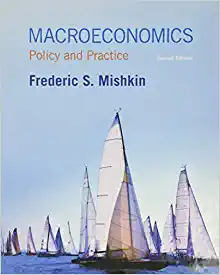Question
SWOT ANALYSIS QUESTIONS Shelly and Alan are both 38 years old. They are non-smokers and have 2 young children, Brandon (8) and Ally (6). They

SWOT ANALYSIS QUESTIONS
Shelly and Alan are both 38 years old. They are non-smokers and have 2 young children, Brandon (8) and Ally (6). They have recently switched financial institutions to renew their mortgage and as a special bonus have been offered a free financial plan. The Financial Planner has met with the couple and collected the following information: Description Assets Liabilities Income Expenses/Payments Annual Earnings $145,000 Shelly $85M + Alan $60M *assume an income tax rate of 30% Home $550,000 Mortgage $350,000 $1,840/mo Heat/Hydro/Taxes $700/mo Cars (2) $35,000 Car loan $15,000 $450/mo Savings Account $2,500 (joint) Shelly's RRSP $25,000 (contributing $2,000/yr) Alan's RRSP $40,000 (contributing $4,000/yr) Group life insurance policies $145,000 Shelly $85M, Alan $60M (spouse is beneficiary for both) Credit card Low interest rate credit card (12%) with a limit of $12,000) $5,000 owing Minimum payment is 5% / mo General Expenses Groceries/ Drug Store $600/mo Children's activities, travel clothing $8,000/yr
Question #1 Assess Shelly and Alan's current financial situation using all applicable financial formulas and ratios, the complete a SWOT analysis to determine their financial strengths, weaknesses, opportunities, and threats.
Question #2 Shelly and Alan have recently lost a close friend in a car accident. They feel so sad to see their friend's wife left struggling to raise and provide for her 2 children all alone. Shelly and Alan have given some thought to the family's financial affairs should one or both of them unexpected pass away. Their wishes include: that if one spouse dies the family remains in the home, $140,000 is required for the children's post secondary education, if one spouse passed away the other would need supplemental income equivalent to 50% of the other spouse's gross income until Ally completed a post secondary degree at age 22. If they both passed away Alan's sister would become the children's guardian, would take them into her home and would require annual income of $20,000 each until Ally completed a post secondary degree at 22. Shelly and Alan would like the team to assess the amount of life insurance they would need if: 1) Shelly passed away 2) Alan passed away and 3) both pass away. *make and state any assumptions (ie. Interest earned - inflation) and ignore estate taxes
Question #3 Provide 2 options of how Shelly & Alan could use their monthly surplus cash to address any of the weaknesses, opportunities or threats identified. Provide rationale for each option and how it addresses a gap or capitalizes on an opportunity, state any information/questions you may have of the clients and clarify next steps.

Step by Step Solution
There are 3 Steps involved in it
Step: 1

Get Instant Access to Expert-Tailored Solutions
See step-by-step solutions with expert insights and AI powered tools for academic success
Step: 2

Step: 3

Ace Your Homework with AI
Get the answers you need in no time with our AI-driven, step-by-step assistance
Get Started


